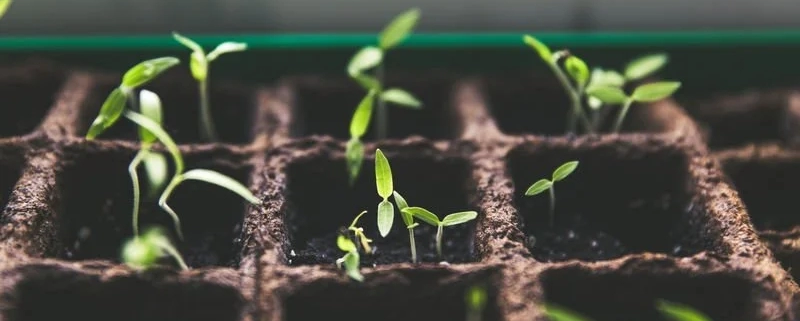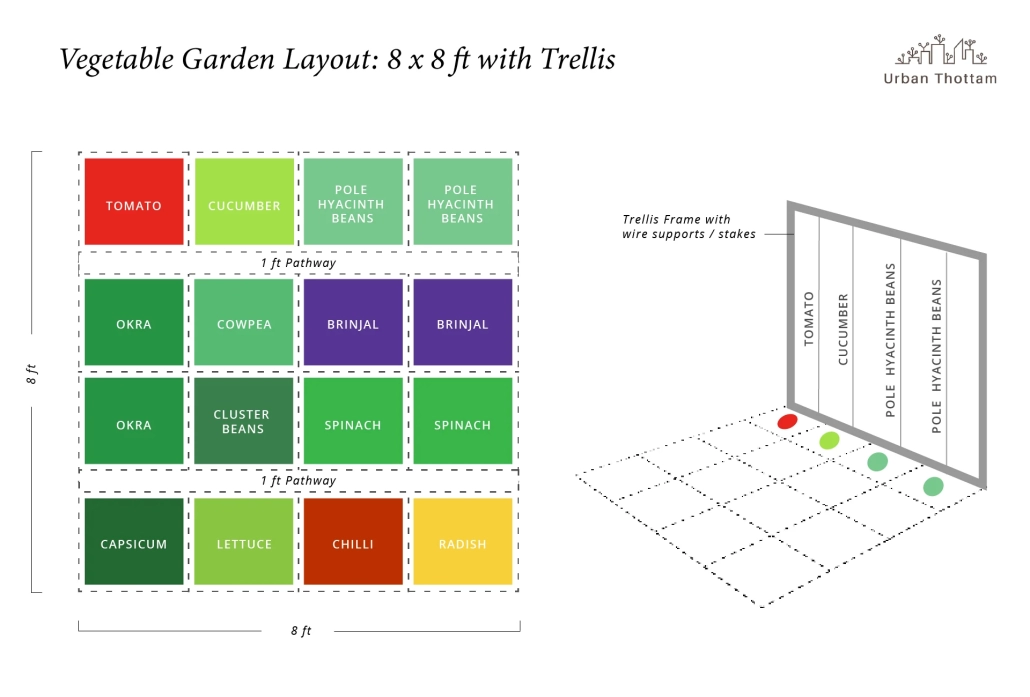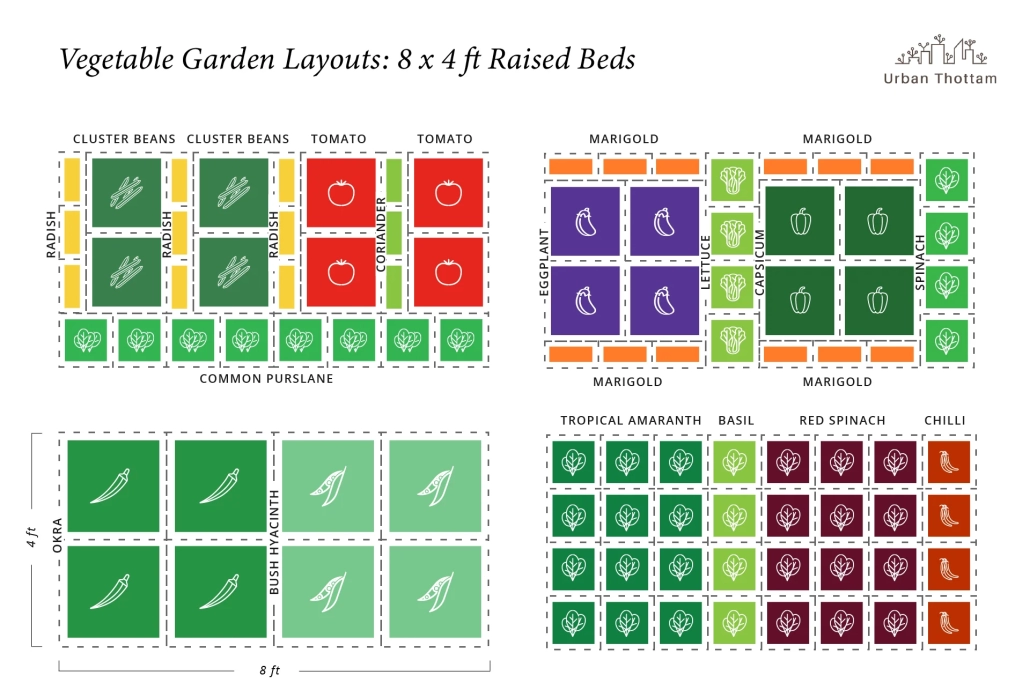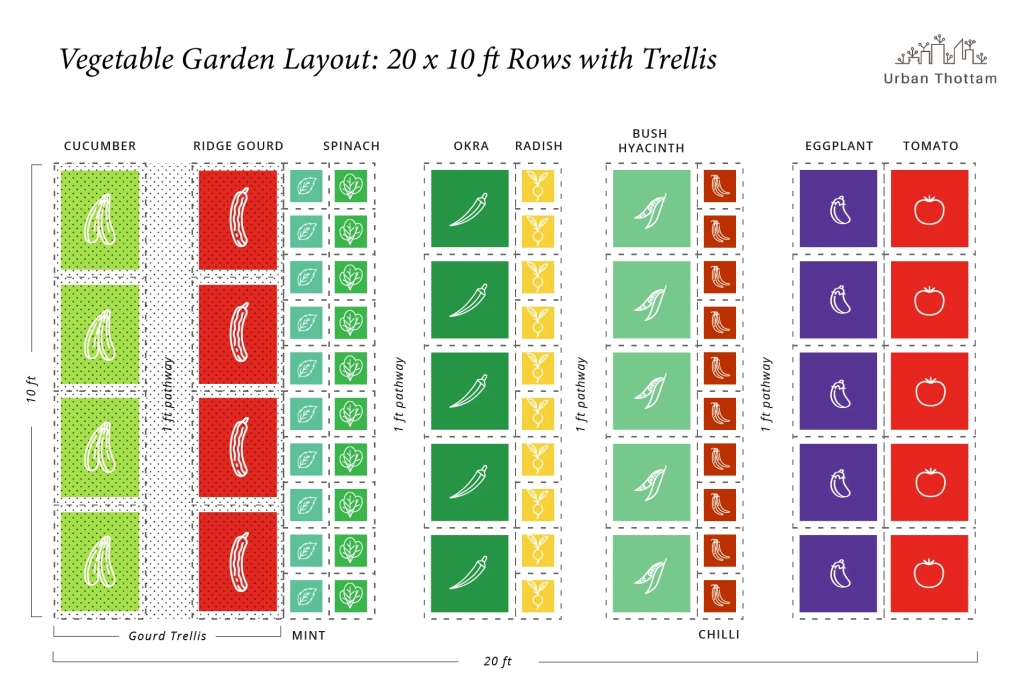Sunlight, Spacing & Layouts
Sunlight
Plants must be planted based on their specific sunlight and shade requirements. Large neighbouring trees and buildings can shade portions of a garden, limiting the sunlight availability in that region. On the other hand, rooftop/ terrace gardens, especially on taller buildings, are likely to have no respite from heat. Erecting shade nets may be necessary to protect plants that do not tolerate high heat well. The availability and intensity of sunlight should always be considered when deciding what and where to grow.
Most local crop species of vegetable, greens and herbs that can be grown in Chennai (or cities with similar climate and elevation) require a minimum of 4 to 6 hours of sunlight.
While shade requirements are different for different crops, in general, during the initial growth stages of a crop, it is best not to subject the plant to harsh, direct sunlight. Some cool climate plants that can be grown in warmer conditions (like lettuce) will definitely require a shaded atmosphere to grow in. Please refer to the Crop Encyclopedia for crop specific light requirements.
Spacing
Spacing between plants is a crucial aspect to consider in maintaining relative humidity levels between crops. It also discourages pests among plants of the same or complementary kind. Shoots (foliage) that are subject to good ventilation and the right amount of sunlight discourage the formation of molds and other moisture related problems/pests/diseases.
Layouts
How you layout your vegetable thottam will depend on the space (indoors/backyard/terrace), size (small or large) and light available. To identify which crops are best suited given the space you have to grow your garden, please refer to the Planting Calendar or the Crop Encyclopedia.
Companion planting is a planting and layout strategy that not only delivers benefits such as pest prevention and increased yields, but is also an intelligent and efficient use of space, and can take care of differing sunlight requirements. For instance, the herb basil doesn’t do well in strong sunlight, so planting it alongside taller tomato plants takes care of its shade requirements, while also saving space and improving tomato yields through its pest repellent properties. Please refer to the Companion Crops section to help you plan which plants you can plant together and which you should avoid.
Most urban vegetable farms will need to be as space efficient as possible. Try and maximize the use of your available space by strategically including elements like a trellis to support climbing plants (which can also act as sun cover), or using balcony railings and fencing to support climbers and other vertical planting crops.
Sample Layouts
REFERENCES
Personal Conversation with Mrs. K. Parimala, Sempulam Sustainable Solutions Private Limited
Personal Conversation with Mr. Alladi Mahadevan, The Organic Farm




